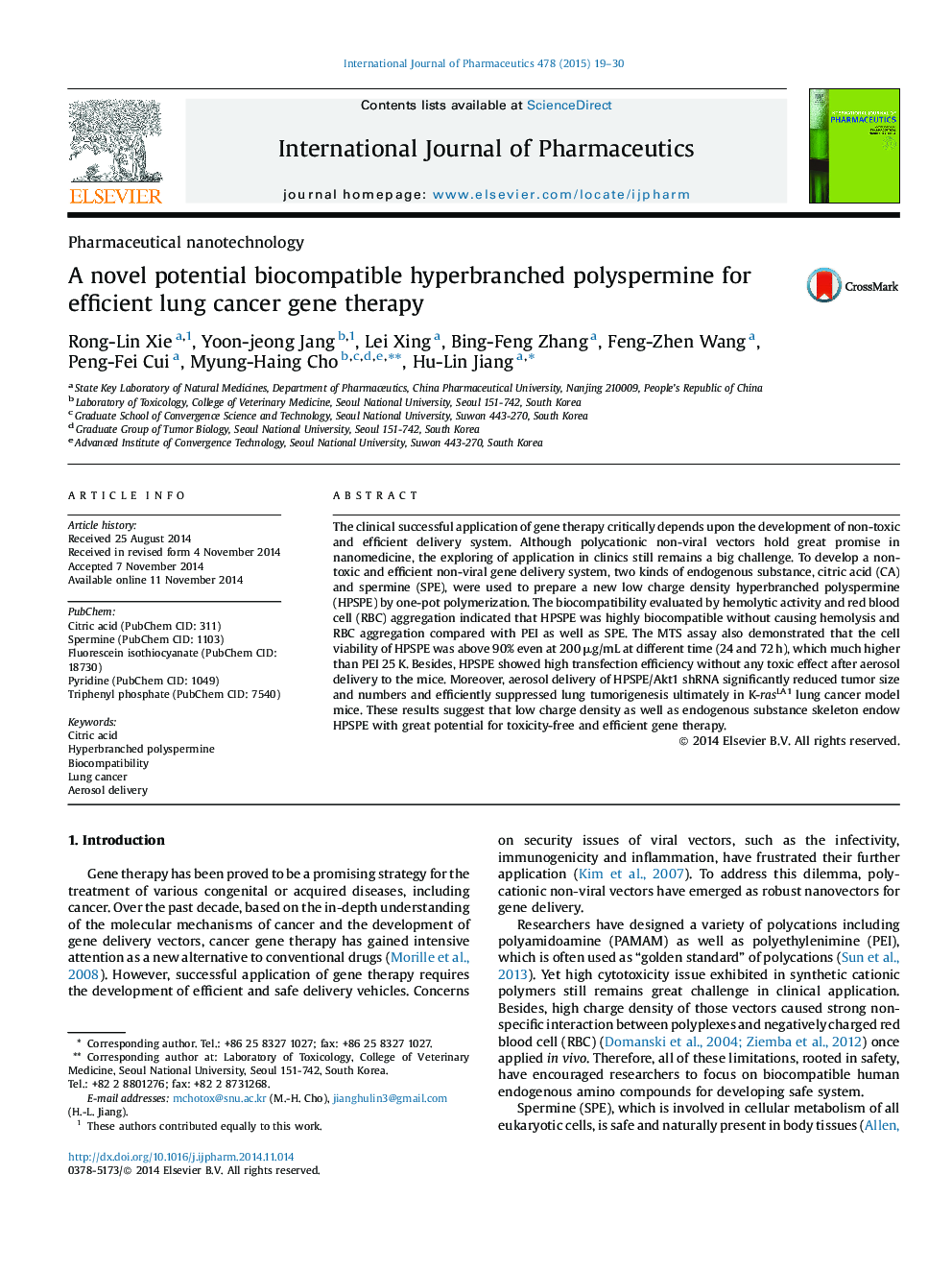| Article ID | Journal | Published Year | Pages | File Type |
|---|---|---|---|---|
| 2501607 | International Journal of Pharmaceutics | 2015 | 12 Pages |
The clinical successful application of gene therapy critically depends upon the development of non-toxic and efficient delivery system. Although polycationic non-viral vectors hold great promise in nanomedicine, the exploring of application in clinics still remains a big challenge. To develop a non-toxic and efficient non-viral gene delivery system, two kinds of endogenous substance, citric acid (CA) and spermine (SPE), were used to prepare a new low charge density hyperbranched polyspermine (HPSPE) by one-pot polymerization. The biocompatibility evaluated by hemolytic activity and red blood cell (RBC) aggregation indicated that HPSPE was highly biocompatible without causing hemolysis and RBC aggregation compared with PEI as well as SPE. The MTS assay also demonstrated that the cell viability of HPSPE was above 90% even at 200 μg/mL at different time (24 and 72 h), which much higher than PEI 25 K. Besides, HPSPE showed high transfection efficiency without any toxic effect after aerosol delivery to the mice. Moreover, aerosol delivery of HPSPE/Akt1 shRNA significantly reduced tumor size and numbers and efficiently suppressed lung tumorigenesis ultimately in K-rasLA1 lung cancer model mice. These results suggest that low charge density as well as endogenous substance skeleton endow HPSPE with great potential for toxicity-free and efficient gene therapy.
Graphical abstractFigure optionsDownload full-size imageDownload high-quality image (81 K)Download as PowerPoint slide
